Day Five in Bhutan: Punakha to Paro
We left Punakha’s Meri Puensam Resort just after 9:00 a.m., according to the old fashioned clock hanging outside the reception cottage. Like a lot of things in Bhutan, the clock looked old but new, machine made but hand-lettered, a blend of old style and modern convenience. It seems like every detail in Bhutan has a story to tell, a bit of history to share or just something of interest that makes you wonder about its origins.
We drove north from the hotel, stopping at a small park with a view of Punakha Dzong — the focus of our morning. The sun had just come up over the mountains to the east, illuminating the isthmus at the confluence of the wide Mo Chhu and Pho Chhu (mother and father rivers). Punakha Dzong was built here at the base of the hill in 1637 — at the tip of the trunk of a sleeping elephant as metaphorically predicted by Guru Rinpoche, the founder of Mahayana Buddhism.
Nearly 400 years of history, including fires, earthquakes and flooding, sat quietly on the riverbank in front of us. Punakha Dzong looked statuesque, fortified and regal, reached by a diminutive bridge over the river at the west side.
In looking at this photograph now, it’s apparent how perfectly proportioned Punakha Dzong is to its surroundings. It is beautiful but not ostentatious. Its height complements the width of the rivers. The contour of the structure matches the contour of the mountain behind. How fascinating to wonder about the process of designing and building it so many years ago. Did the builders stand at this exact viewpoint, pushing the height and roof tops up, up, up until they seemed in perfect harmony with the landscape?
Upon crossing the bridge, I discovered the bridge is not diminutive at all and actually rather large with post and beam construction and a gable roof. Over the river and through the doorway, the gargantuan scale of the dzong became suddenly apparent as I stood in its shadow and looked up. This really is the essence of the beauty of Punakha Dzong — that its presence is harmonious with the landscape yet so grand and significant to those within and around it.
I walked beyond the entry and down the stairs to the gardens on the east side of the dzong. I wanted to get a photograph of the entire structure. I backed up as far as I could but I still couldn’t capture it full frame, as Kinga provided scale standing on the steps at lower right in the photo. He looks so tiny!
The north entrance has two steep staircases — one of which is wooden and can be pulled up to deny entry to any unwelcome visitors. We climbed up, reaching the landing with a walk-around prayer wheel and beautiful painted murals throughout.
Punakha Dzong is unique in having three docheys or courtyards (rather than two). The first courtyard accommodates administrative offices, monks quarters surround the second courtyard, and the third courtyard has a temple and assembly hall. No matter where you are in Punakha Dzong, significant doorways and staircases are all around.
We removed our shoes and Kinga led us through the assembly hall where about 30 young monks were reciting texts in a continuous hum. They tried to sit still and ignore the handful of tourists walking clockwise around the room, but I caught a few curious glances as we admired the interior. We received a blessing, putting the water in our hands to our mouths and then pouring it over our heads. Kinga told us the story of Buddha’s life as portrayed by the murals on the north wall.
Having toured the interior, we returned to the first courtyard and descended the staircase, passing this incredible embossed metal work on the front door. Outside, the morning was heating up as families and monks came and went across the bridge in colorful ensembles.
After just a few more photos of Punakha Dzong we were back on the road to Thimphu, having seen some breathtaking sites in Punakha and Phobjikha Valley. Crossing Dochula Pass and its 108 chortens once more, the skies were clear revealing Bhutan’s Himalayas to the north.
We reached Thimphu in the early afternoon, and met up again with Fin, owner and founder of Bridge to Bhutan. We shared the details of our fascinating trip over great pizza (yes, pizza!) and salad at Season’s Restaurant. I highly recommend this quaint eatery if you find yourself craving a little variety amidst the Bhutanese buffets.
We bid a fond farewell to Fin and set out on an afternoon of shopping before heading to Paro for the night. Shopping in Thimphu was surprisingly good — the National Handicrafts Emporium sells many different fixed-price items (rugs, shawls, wooden bowls, boots, paintings, jewelry) with the guarantee that everything they sell is made in Bhutan.
Not far from the emporium, the “Bamboo Stalls” also have a wide range of things for sale in more than 50 outdoor huts lining the sidewalk. (Apologies for the photo quality — I was using the point-and-shoot during this little outing.)
The Bamboo Stalls have purses, bags, table runners (bought one), scarves, shawls, jackets, wood carvings and lots of great other souvenirs to take home. Many prices are fixed, but sellers usually offer a small discount if you show interest in something. Go early — the cold nights shut down the stalls shortly after dusk.
And that brings me to the Bhutanese boots. Yes, boots. I became mildly obsessed with them during the six days I was in Bhutan. You will not find boots like these anywhere else in the world, which is why I think I was so enamored with them. They are embroidered, colorful, extremely decorative and usually very tall (just Google Image “Bhutanese boots” and you’ll see what I mean). K5 (the current king) is often wearing these boots in his stately portraits.
My obsession turned into a search for a boot shop, which we located in Thimphu after dark. We entered the shop where boots were being made in custom sizes and colors, awaiting pick up by their lucky owners. We saw the soles being attached and the sewing machine where the boots were put together. So cool!
If only I could have found a reason why I needed these boots! I figured I could wear them in Singapore for a special occasion but then again I didn’t want to disrespect their beauty, history and purpose. So I decided they were best… left in Bhutan. We said goodnight and I left the shop empty handed. Perhaps next time I go I’ll bring back a pair and put them in a glass case as a memory of the spirit and uniqueness of this country.
We drove on to Paro, checked into yet another charming hotel, enjoyed dinner together and departed for Tiger’s Nest in the morning.


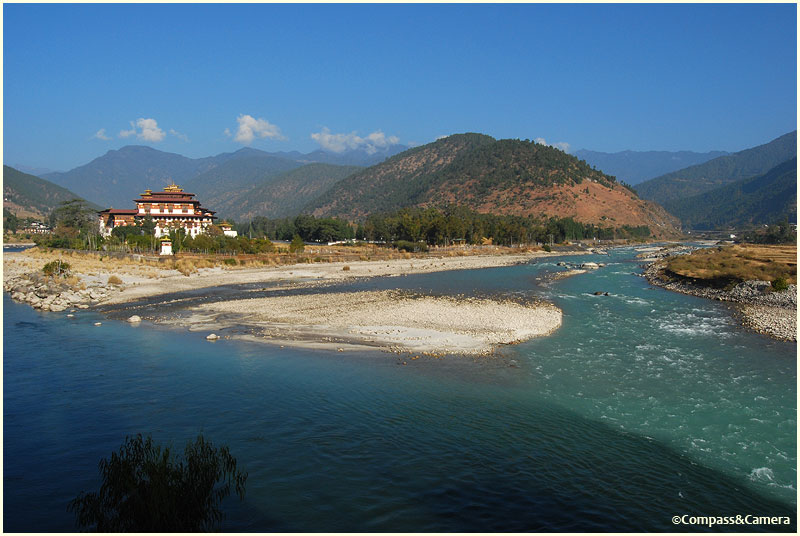
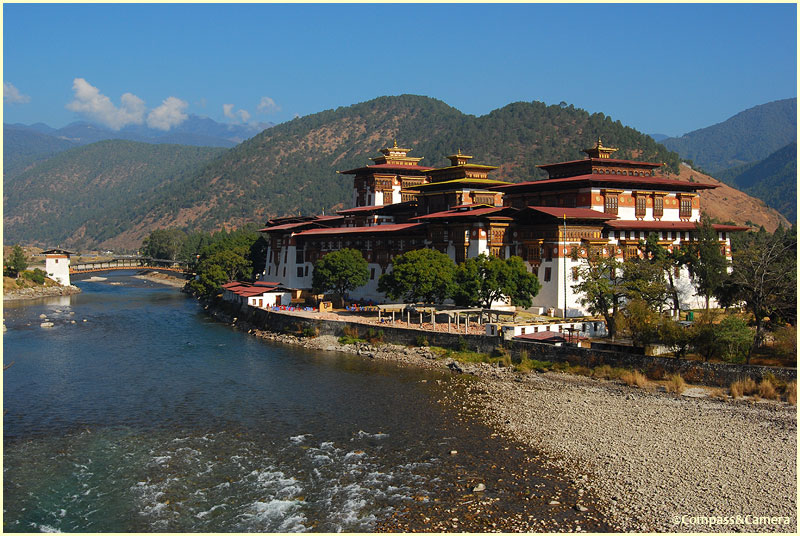
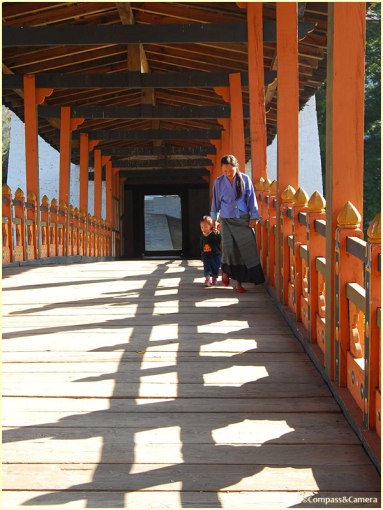



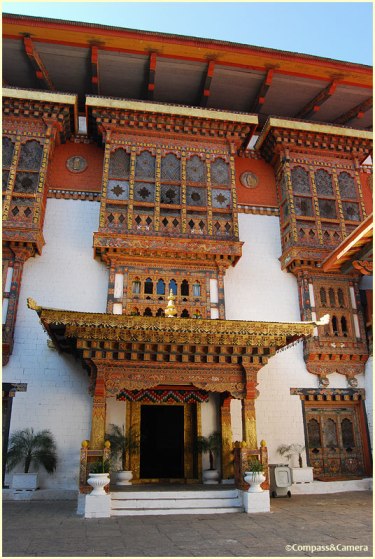
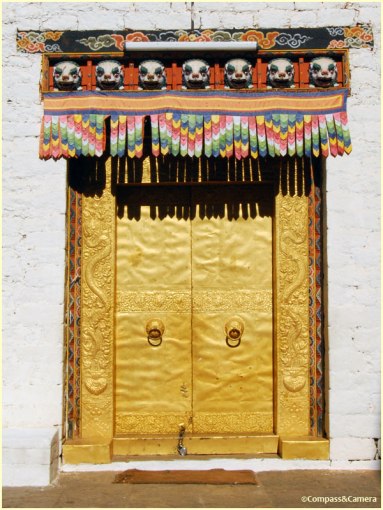
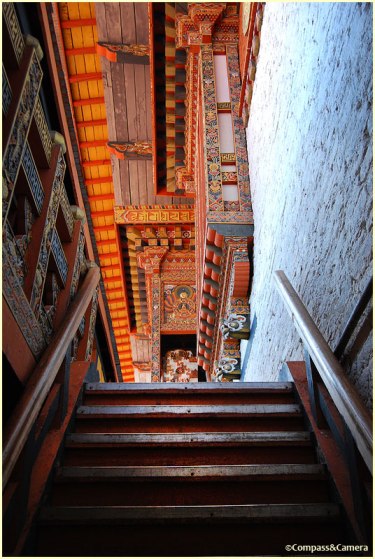

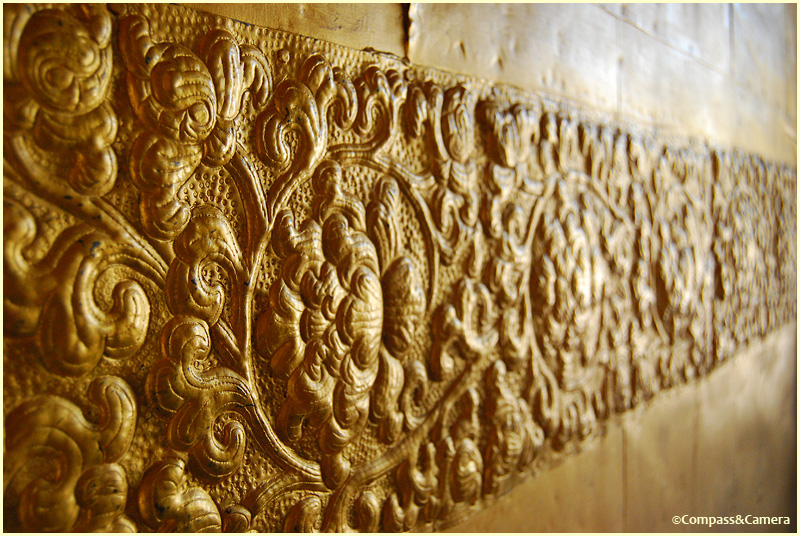


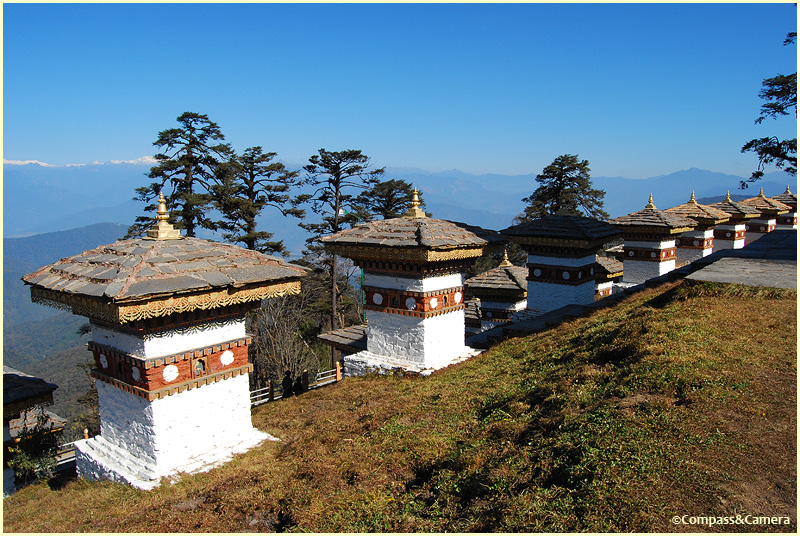
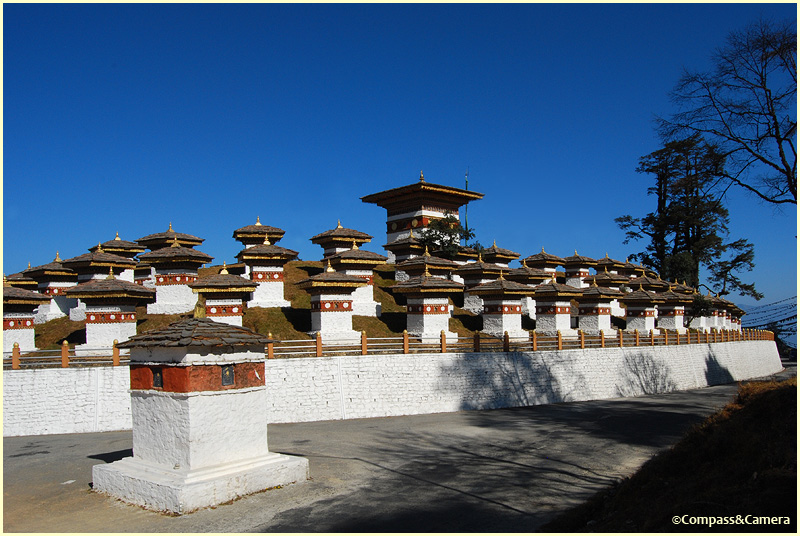
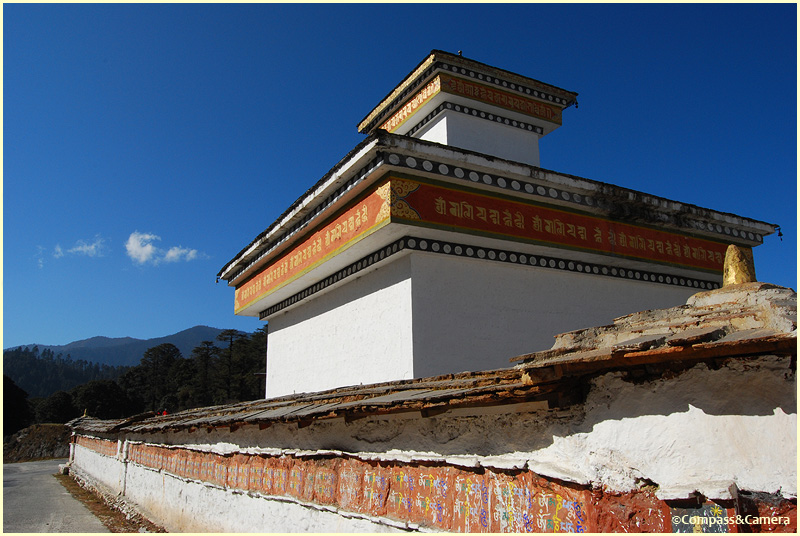
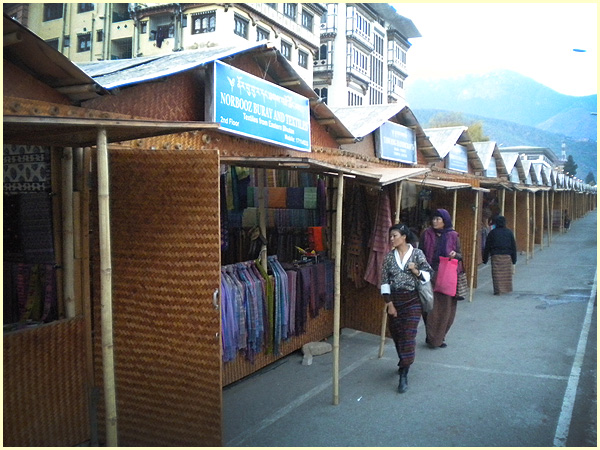
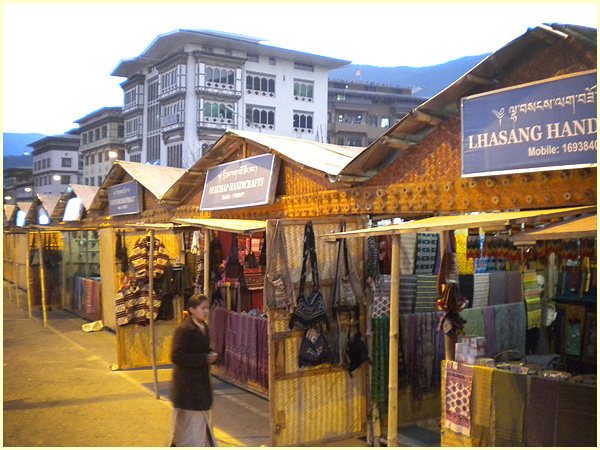
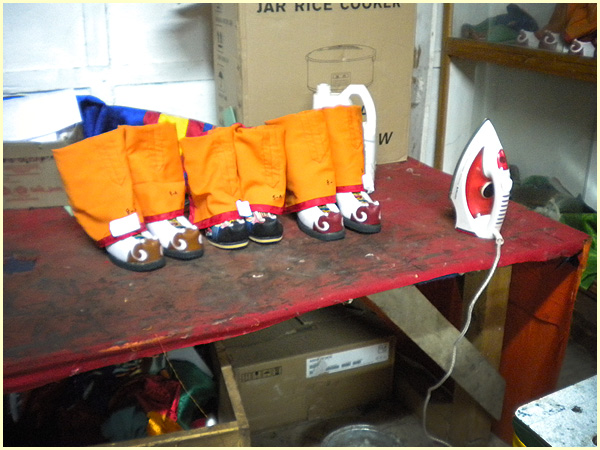

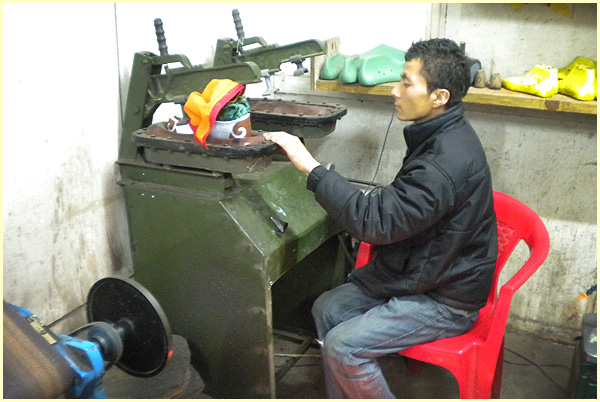

Holy smokes K – great archi-post! So much to look at in those photos, and awesome commentary on the design. Genius loci, sacred geometry, and all that other good stuff. However, you clearly messed up by leaving the boots (bhuts?)…
LikeLike
YES! LOL, the Bhuts! Very clever, my friend. I should have brought a pair home, but I guess it gives me reason to go back. Thanks for your comment regarding the architecture. In writing this today and inspecting that close up photo of the dzong across the river, I was really struck by how perfectly it sits there yet how massive it feels when you’re next to it. A brilliant contrast, by someone who did a very good job all those years ago. Also, that wonderful little gable- and shed-roofed hut with the family walking through the doorway… wouldn’t that be brilliant as inspiration for the entry to my dream home! 🙂 Someday… Thanks for reading Archi-Ted!
LikeLike
Glorious shot follows glorious shot! I love the sequence around that bridge.
LikeLike
Oh, I could have spent HOURS on that bridge!! It was gorgeous and the light and shadows just never ceased looking beautiful. Thanks Restless Jo! 🙂
LikeLike
I was struck by the fact that Punakha Dzong was built in 1637. How incredible to have constructed such beauty with the tools available in that time.
Beautiful narrative and photos K.
LikeLike
K….I could wear those boots on the golf course. It would certainly compliment my game! Keep up the good work…POP (D)
LikeLike
Great idea! In the spirit of Payne Stewart, perhaps! Thanks for reading!
LikeLike
Pingback: Day Four in Bhutan: Venture to the Valley | Compass & Camera